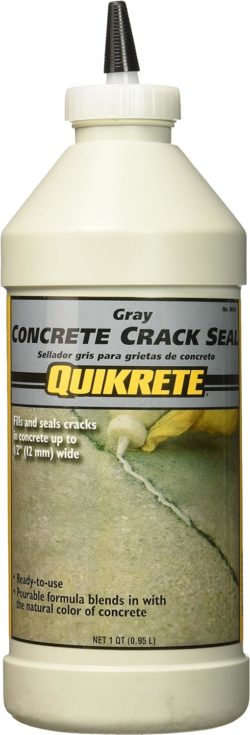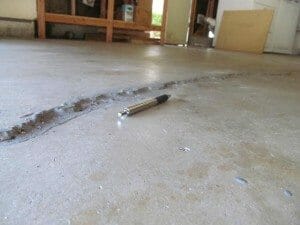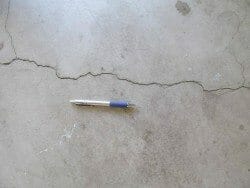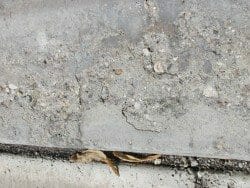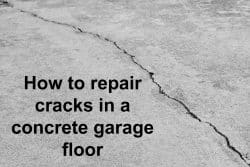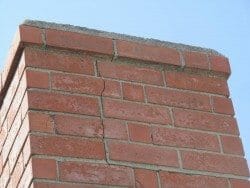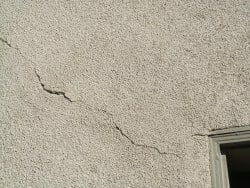Concrete Driveway Cracks
Home » Yard, drive, walks, patios » Driveways »
Concrete driveways are an essential part of many properties, valued for their durability and aesthetic appeal. Yet, they are vulnerable to cracking due to various factors. Cracking in concrete driveways is common. Take a walk around your neighborhood and you will usually find that the neighbors have cracks in their driveways as well. The older the driveway and the more severe the climate, the more expectation that a concrete driveway will experience cracking.
Understanding the factors that lead to cracking, the types of cracks that can occur, and the repair methods is essential for maintaining the integrity and appearance of your driveway. A nice-looking, well-maintained driveway adds a lot of curb appeal to any home.
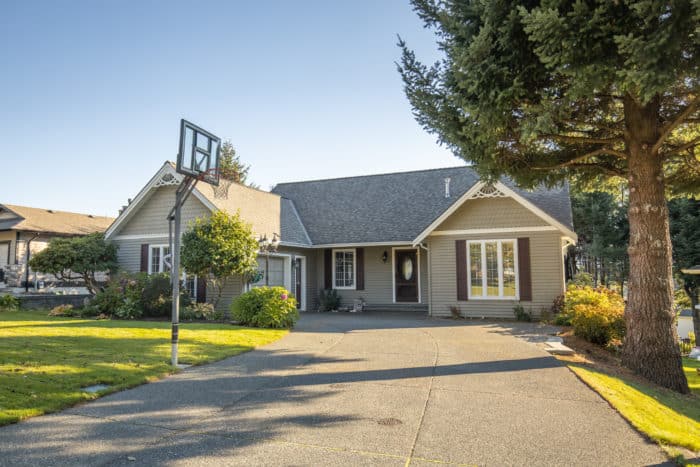
1. Influencing Factors on Driveway Condition
- Age of the Driveway: Aging inevitably leads to more wear and tear and over time leads to material degradation, increasing susceptibility to cracks.
- Climate: Extreme temperature changes cause concrete expansion and contraction, leading to cracks. In areas with severe winters, the freeze-thaw cycle can cause expansion and contraction in the concrete, leading to cracks. Similarly, excessive heat can cause concrete to expand and crack.
- Type of Soil: The soil beneath the driveway also plays a critical role. It is estimated that more than half of the nation’s homes are built in areas that have expansive or unstable soils. Soil that expands and contracts affects the concrete’s stability, causing cracks. Expansive soils, which swell when wet and shrink upon drying, can cause movement in the concrete, leading to cracking. Poorly compacted or shifting soils also contribute to instability and cracking.
2. Types of Cracks in Concrete Driveways
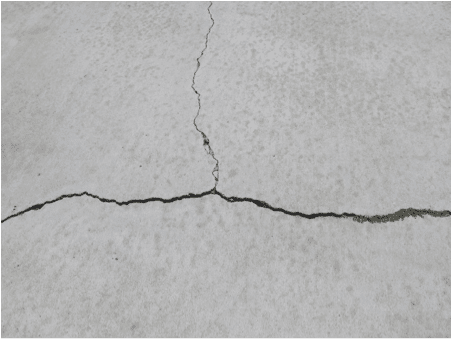
- Hairline Cracks: Fine surface cracks. These thin surface cracks do not signify structural damage but can worsen over time if not addressed.
- Settling Cracks: Due to uneven soil settlement, often caused by soil that was not well compacted before the concrete was poured. These frequently occur when the ground under the concrete settles unevenly, causing the driveway to crack.
- Expansion Cracks: Caused by thermal expansion. Often caused by the expansion of concrete during hot weather, these cracks typically occur at expansion joints but can also appear elsewhere. These are more common in areas with high-temperature variations, particularly regions that experience hot summers. The Southwestern United States, for example, might see more of these types of cracks.
- Frost Heave Cracks: Result from the freezing and expansion of water beneath the driveway, common in cold climates. These are specific to colder climates where freeze-thaw cycles are common, like the Northeast and Midwest regions of the United States. The repeated freezing and thawing of water beneath the driveway causes significant movement in the concrete, leading to cracking.
- Shrinkage Cracks: A natural occurrence in concrete, from rapid drying of concrete. When the concrete dries too quickly after installation, it leads to tension in the surface which causes cracking.
- Root-Related Cracks: Caused by growing tree roots which exert upward pressure on the concrete.
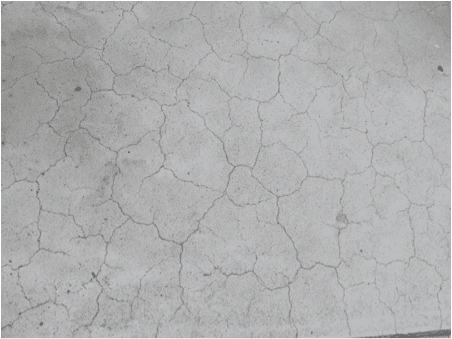
3. Common Causes and Statistics
It is estimated that over 50% of driveways develop cracks within two years of installation, primarily due to substandard construction practices or environmental factors.
- Poor Construction: Improper installation of the concrete driveway, including inadequate compaction of the sub-base, inappropriate concrete mix, or insufficient curing, can lead to early cracking.
- Excessive Load: Concrete driveways are designed to handle a specific weight limit. Exceeding this limit with heavy vehicles can cause cracking.
- Water Damage and Poor Drainage: Poor drainage can lead to water pooling on the driveway, weakening the concrete and causing cracks.
- Tree Roots: Growing tree roots exert pressure, disrupting the concrete structure.
- Control Joints Failure: Improper joint placement leads to uncontrolled cracking.
- Shrinkage: During the curing phase of concrete.
4. Control Joints in Concrete
When you look at a concrete driveway or sidewalk, you will notice control joints about every 5 feet. The control joints are placed because it is guaranteed that the concrete is going to crack and the joint will control the location of the crack. By weakening the concrete in the control joints, the concrete will most likely crack in that location preventing ugly cracks throughout the finished driveway surface. Unfortunately, with home patio slabs, driveways, and sidewalks, oftentimes proper control joints aren’t put in, too few were installed or the joints were put in too shallow, and cracking occurs. Fortunately, the cracking doesn’t necessarily mean that the concrete is bad or that there is a serious problem.
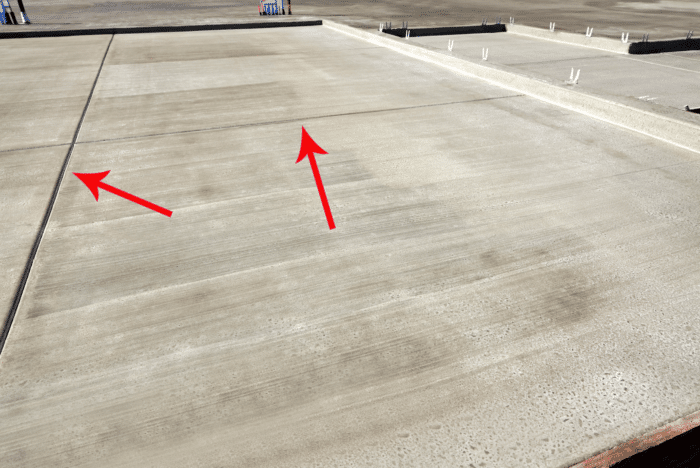
As you can see, control joints are crucial in concrete driveway construction. They are planned fractures that allow for movements caused by temperature changes or drying shrinkage. Properly placed control joints:
- Prevent Cracking: They create a weakened area in the concrete to ensure that it cracks in a straight line at the joint.
- Depth and Spacing: The depth of control joints should generally be a quarter of the thickness of the slab. The spacing should typically be 24 to 30 times the thickness of the slab in inches. Improper depth and spacing can lead to uncontrolled cracking in other areas.
- Misplacement Consequences: If control joints are too far apart, the concrete can crack in an uncontrolled manner. If too close, they may not serve their purpose effectively.
5. Repairing and Preventing Cracks
Generally speaking, repairing small cracks serves little purpose and can just draw more attention to the cracks. Sealing the cracks is a different story. The number one reason for sealing cracks is to prevent moisture (including rain, water from yard sprinklers, melting snow, washing the car) from getting through the cracks and causing settling or soil movement or becoming more damaged from the climate.
- Small Cracks: Can be filled with a concrete crack filler or sealer, which is a cost-effective and straightforward method.
- Large Cracks: These may require more extensive repairs, such as patching with concrete or using a concrete resurfacer.
- Structural Damage: In cases of significant damage, sections of the driveway may need to be removed and replaced.
- Sealing Cracks: As previously stated, the primary reason to seal cracks is to prevent moisture from entering, which can exacerbate the cracking process and lead to more significant damage. Moisture intrusion can weaken the concrete and the sub-base, leading to further cracking and even structural failure. This is generally considered a good idea and is easy to do. There are several ways to do this and many products that work quite well.
- Preventative Measures: During construction, ensure proper control joint placement. Regular maintenance, including sealing the driveway and ensuring proper drainage, can prolong the life of the driveway and prevent future cracks.
- Addressing Shrinkage and Soil Settlement: Ensure stable sub-base and proper curing.
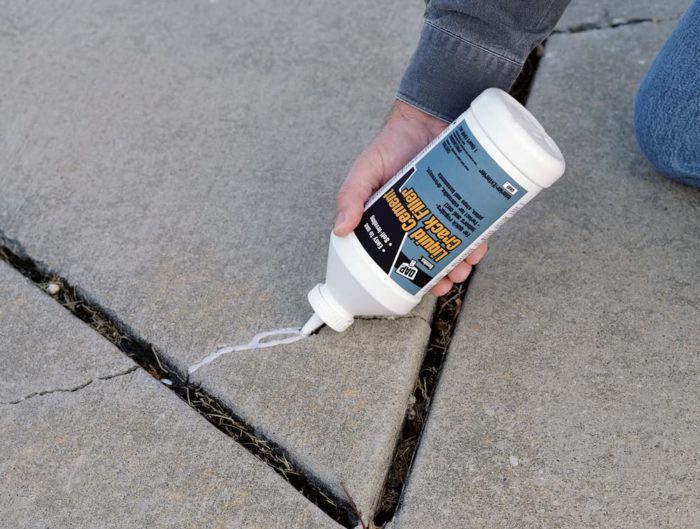
Best Seller on Amazon
QuicKrete
Concrete Crack Seal Natural 1 Qt
